Virtual Dynamics David Series Cables
| Virtual Dynamics David Series Cables |
|
Translucent Soul |
|
Nelson Brill |
|
October 2004 |
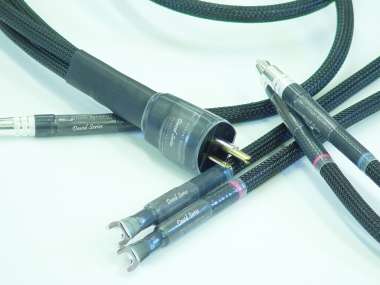
“Embrace what you have in common/celebrate what sets you apart/
it takes more than the color that you find on a palate/ to turn humanity into an art/ into the form of an art/ translucent soul.”
Ellis Paul, “Translucent Soul” [Philo 711200]
In 1781, a gifted engineer in the Corps du Genie in France, Charles Augustin de Coulomb, wrote a scientific paper that is now viewed as the seminal work establishing the formal science of friction. In his “Un Essai Sur La Theorie Du Frottement,” Coulomb investigated both static and dynamic friction of sliding surfaces and developed a number of equations to describe what he observed. In Coulomb’s day, these sliding and rolling surfaces were metal and wood; in our time, his scientific theories apply to the movement of electrons through conductive material, influenced by the presence of a dielectric. In applying Coulomb’s discoveries to this realm of electrons and energy moving in circular patterns, it is postulated that electrons are slowed by internal resistance (“Coulomb friction”) that causes vibration to occur inside a conductor, producing mechanical heat and static energy. Such vibration (which increases as the flow of electricity is increased in a conductor) causes distortion to an audio signal passing through. For Virtual Dynamics’ energetic President, Rick Schultz, the melding of science and technology to decrease the effects of Coulomb friction in their line of cables is a paramount goal. The philosophy of Virtual Dynamics can be summed up in the following philosophic syllogism: reduce inductance, align electrons and thus remove distortion! The combining of scientific theory, technology and art is what lies at the core of Virtual Dynamics’ cable products, along with spice from Schultz’s own religious views on the philosophy of science and its relationship to audiophile science. Virtual Dynamics has also turned to religious sources for the namesake of the audio cable under review here: David, from Samuel Chapters 16-18 of the Bible, where David slews the giant, Goliath. Instead of sheep’s wool (which the legendary David wrapped himself in to keep warm in the pastures while gazing at celestial bodies), the David Series cables incorporate many of the technical advances of Virtual Dynamics’ more expensive lines of cables, the Nite II and Masters Series, in a more affordable cable. The goal is to achieve David’s clarity of purpose in the realm of audio signal purity and like David’s slingshot, to achieve enhanced speed and accuracy in the delivery of an audio signal.
David’s Physique
In his review of the more expensive Nite II Series of cables, (read review here), Dave Thomas offered a detailed discussion of many of the proprietary technical aspects of Virtual Dynamics’ cabling, (common as well to the David Series of cables) and I urge readers to refer to Dave’s lucid review. I would, however, like to highlight a few of these technical features of the David cables here, just to illustrate the kinds of care and impressive technical attention that is given to these more affordable cables from Virtual Dynamics. 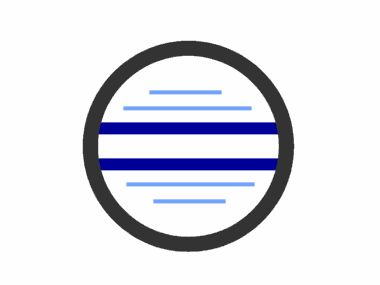 For example, the David Series cables incorporates proprietary “Dynamic Filtering” technology, which targets the buildup of Coulomb friction in a conductor. Applying techniques and materials from other engineering sciences, this ingenious method involves surrounding the pure copper core conductor of the David cable with numerous grains or “spheres” of a denser metal, which serve to dissipate mechanical energy and Coulomb friction from the conductor itself. According to Schultz, this results in a stronger, cleaner and more linear signal. Dynamic filtering technology also allows for these cables to employ increased gauge size (9.5 gauge) of their copper cores, without the attendant increase in resistance for such higher gauge materials. In addition to Dynamic Filtering, the David Series of cables also incorporate Virtual Dynamics’ “Speed of Light” design technology, with its employment of magnetic flux lines laid into the conductor to promote the flow of electricity and combat electromagnetic fields that degrade audio signals.
For example, the David Series cables incorporates proprietary “Dynamic Filtering” technology, which targets the buildup of Coulomb friction in a conductor. Applying techniques and materials from other engineering sciences, this ingenious method involves surrounding the pure copper core conductor of the David cable with numerous grains or “spheres” of a denser metal, which serve to dissipate mechanical energy and Coulomb friction from the conductor itself. According to Schultz, this results in a stronger, cleaner and more linear signal. Dynamic filtering technology also allows for these cables to employ increased gauge size (9.5 gauge) of their copper cores, without the attendant increase in resistance for such higher gauge materials. In addition to Dynamic Filtering, the David Series of cables also incorporate Virtual Dynamics’ “Speed of Light” design technology, with its employment of magnetic flux lines laid into the conductor to promote the flow of electricity and combat electromagnetic fields that degrade audio signals.
 Finally, as in the higher priced cables offered from Virtual Dynamics, we have the full use of cryogenic science employed to attempt a more stable environment for electricity to flow at the atomic level, as well as the application of Pro Tex, a carbon lubricant, to contact points on all David interconnect , speaker cables and power cables (photo above). Pro Tex, a material discovered from its use in chemical industry applications, provides unlimited protection against oxidation without dielectric effects and is guaranteed to work for life. The application of Pro Tex to each David cable contact and connector is reflective of the kind of care and scientific thought that goes into this cable product and its design.
Finally, as in the higher priced cables offered from Virtual Dynamics, we have the full use of cryogenic science employed to attempt a more stable environment for electricity to flow at the atomic level, as well as the application of Pro Tex, a carbon lubricant, to contact points on all David interconnect , speaker cables and power cables (photo above). Pro Tex, a material discovered from its use in chemical industry applications, provides unlimited protection against oxidation without dielectric effects and is guaranteed to work for life. The application of Pro Tex to each David cable contact and connector is reflective of the kind of care and scientific thought that goes into this cable product and its design.
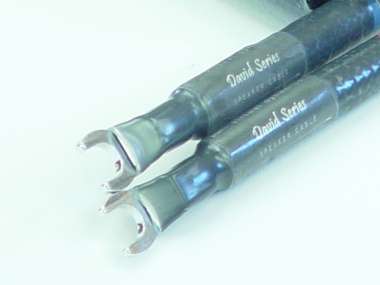 I share Dave Thomas’ observations concerning the elegance and build quality of Virtual Dynamics cables. In the David Series of interconnects, speaker cables and power cables, nothing is spared in terms of build quality, from their shining, tough, black sheaths, to the nicely-sized Cardas spades on the speaker cables, and the heavy Hubbel and Marinco connectors on the power cables. I also share Dave’s observation that one must be prepared to work hard to manipulate these cables into their respective places in your audio system. Given the large gauge copper conductors employed, the stiffness of these cables is by design. However, you must make appropriate adjustments to your equipment setup to make sure that you can work these stiff cords into place without major bending of their copper innards – a time consuming and difficult task for those maneuvering in tight spaces. The David power cords consist of three separate solid core cables cold crimped and terminated at their heavy connector, and this exotic design can also be a real bear to manipulate into proper positioning. I had some difficulty attaching these stiff power cables to my Hydra 8, without actually lifting the Hydra and some other of my components off of their stands or isolation feet. It was all worth the sweat and hard work in the end, but you need to plan ahead with these overly stiff cables by design.
I share Dave Thomas’ observations concerning the elegance and build quality of Virtual Dynamics cables. In the David Series of interconnects, speaker cables and power cables, nothing is spared in terms of build quality, from their shining, tough, black sheaths, to the nicely-sized Cardas spades on the speaker cables, and the heavy Hubbel and Marinco connectors on the power cables. I also share Dave’s observation that one must be prepared to work hard to manipulate these cables into their respective places in your audio system. Given the large gauge copper conductors employed, the stiffness of these cables is by design. However, you must make appropriate adjustments to your equipment setup to make sure that you can work these stiff cords into place without major bending of their copper innards – a time consuming and difficult task for those maneuvering in tight spaces. The David power cords consist of three separate solid core cables cold crimped and terminated at their heavy connector, and this exotic design can also be a real bear to manipulate into proper positioning. I had some difficulty attaching these stiff power cables to my Hydra 8, without actually lifting the Hydra and some other of my components off of their stands or isolation feet. It was all worth the sweat and hard work in the end, but you need to plan ahead with these overly stiff cables by design.
David’s Sound
All of the scientific designs and technologies incorporated in the David Series cables would not be worth one shekel if these cables did not bring the listener closer to that ephemeral sought-after goal of ours: a clearer window into the musical intention and artistry of the performance at hand. I second the opinions of colleagues like Robert Harley, in his “Complete Guide To High-End Audio,” when he refers to cables as being absolutely system dependent, encouraging audiophiles to test each cable in the confines of their own systems and listening room configurations. I also agree with Harley’s observations regarding the critical need of break-in time for any cable or interconnect before they sound their best. On this point, Schultz instructs that it takes an average of 400 hours of placement in ones system for his Virtual Dynamics cables to reach their full sonic potential. Schultz was particularly gracious in allowing me the opportunity to audition these David cables for more than six months on a daily listening basis, and I can confirm that these cables do become more refined over a long period of break in. My conclusions as to their sonic input into my listening system takes into account this lengthy break in period. Finally, I also followed Schultz’s explicit advice in conducting this review by placing David interconnects, speaker cables and power cords all at once into my listening system, as a complete cable solution. This is in contrast to the procedure employed by Dave Thomas in his earlier review of the Nite II cables, where he inserted the speaker cables, interconnects and power cords separately and over time into his listening system.
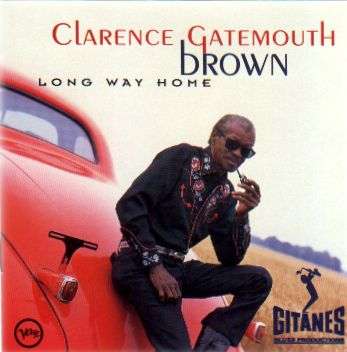 With the David cabling in place, I found that everything in the music was allowed to flow at a dynamic and natural pace. This was true no matter what genre of music was played and whether I employed solid state or tubed based systems. It was also true at different volume levels, with no listening fatigue associated with such a liquid and dynamic presentation. Listening to the blues master Clarence Gatemouth Brown, on his eclectic disc, “Long Way Home” [Gitanes 314529465-2] was a robust revelation with the David cables in the mix of my reference solid state based system, with the Talon Khorus speakers in place. The David cables were a nice fit with the Talon Khorus speakers, as they seemed to complement the Talon’s propensity for directness in their musical presentation. On “Long Way Home,” an acoustic guitar solo cut, I noticed more air, more incisiveness to Gatemouth’s strumming than I had heard with other cables, a more “you are there” attitude. I was fortunate to see Gatemouth live recently in a small venue and he has a wonderful signature guitar movement where he quickly hits a high note and then slides down again, making a “shotgun” trill that he places unexpectedly in his rifts. With the David Series in place, I heard this technique clear as a bell, better than I had before, on “Long Way Home” as well as his other great acoustic cut here, “Underhand Boogie.” Gatemouth also plays a mean fiddle, and on “Dockside Boogie” this fiddle fascination comes to life with the David cables in place, accentuating the fast and clear timbre of this difficult instrument, especially when Gatemouth ranges from very low to high treble notes, as he does here with aplomb. I would characterize the David Series cables as adding a robust sense of “you are there” quality to this blues presentation in my solid-state system configuration. No harshness or grain to treble here, just power, precision and good depth.
With the David cabling in place, I found that everything in the music was allowed to flow at a dynamic and natural pace. This was true no matter what genre of music was played and whether I employed solid state or tubed based systems. It was also true at different volume levels, with no listening fatigue associated with such a liquid and dynamic presentation. Listening to the blues master Clarence Gatemouth Brown, on his eclectic disc, “Long Way Home” [Gitanes 314529465-2] was a robust revelation with the David cables in the mix of my reference solid state based system, with the Talon Khorus speakers in place. The David cables were a nice fit with the Talon Khorus speakers, as they seemed to complement the Talon’s propensity for directness in their musical presentation. On “Long Way Home,” an acoustic guitar solo cut, I noticed more air, more incisiveness to Gatemouth’s strumming than I had heard with other cables, a more “you are there” attitude. I was fortunate to see Gatemouth live recently in a small venue and he has a wonderful signature guitar movement where he quickly hits a high note and then slides down again, making a “shotgun” trill that he places unexpectedly in his rifts. With the David Series in place, I heard this technique clear as a bell, better than I had before, on “Long Way Home” as well as his other great acoustic cut here, “Underhand Boogie.” Gatemouth also plays a mean fiddle, and on “Dockside Boogie” this fiddle fascination comes to life with the David cables in place, accentuating the fast and clear timbre of this difficult instrument, especially when Gatemouth ranges from very low to high treble notes, as he does here with aplomb. I would characterize the David Series cables as adding a robust sense of “you are there” quality to this blues presentation in my solid-state system configuration. No harshness or grain to treble here, just power, precision and good depth.
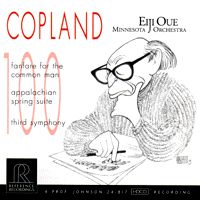 With cable reviews, I also like to see how the insertion of new cable systems add or subtract to soundstage depth and accuracy on large orchestral works, like one of my favorite workhorses, Copeland’s “Third Symphony” [Reference Recordings, 93 CD]. The allegro molto begins with a startling bass drum followed by soaring brass, fast runs from xylophone and woodwinds and a lone piccolo. All is light and weight at the same time and the whole movement is a mastery of different rhythms and soaring themes. Insertion of the David Series of cables was again icing on the cake, adding to the natural ambiance and depth of soundstage that this recording is so perfect in presenting. Musical detail was not exaggerated, but given a more robust and live presentation with these cables, again in the solid-state system context. The transient attack of the brass through out this movement was perfectly rendered in space and time, and the physical impact was considerable, even at lower volumes. Coloration was not an issue, but more a sense that the muscle of this music was coming through accurately and robustly portrayed. Was this robust presentation a little too forward on such delicate voices as Alison Krauss, backed by her crack band, Union Station, on their “Live” [Rounder 11661-0515-2] album? With the Talon Khoruses most direct presentation, maybe, but it sure was fun! Alison’s tender voice was rendered well with the David cables in place, a bit forward and a little brighter than I would like, but such quality added to the excitement of the live feel of this recording.
With cable reviews, I also like to see how the insertion of new cable systems add or subtract to soundstage depth and accuracy on large orchestral works, like one of my favorite workhorses, Copeland’s “Third Symphony” [Reference Recordings, 93 CD]. The allegro molto begins with a startling bass drum followed by soaring brass, fast runs from xylophone and woodwinds and a lone piccolo. All is light and weight at the same time and the whole movement is a mastery of different rhythms and soaring themes. Insertion of the David Series of cables was again icing on the cake, adding to the natural ambiance and depth of soundstage that this recording is so perfect in presenting. Musical detail was not exaggerated, but given a more robust and live presentation with these cables, again in the solid-state system context. The transient attack of the brass through out this movement was perfectly rendered in space and time, and the physical impact was considerable, even at lower volumes. Coloration was not an issue, but more a sense that the muscle of this music was coming through accurately and robustly portrayed. Was this robust presentation a little too forward on such delicate voices as Alison Krauss, backed by her crack band, Union Station, on their “Live” [Rounder 11661-0515-2] album? With the Talon Khoruses most direct presentation, maybe, but it sure was fun! Alison’s tender voice was rendered well with the David cables in place, a bit forward and a little brighter than I would like, but such quality added to the excitement of the live feel of this recording.
Pushing myself off of Alison’s “Choctaw Hayride,” I made the transition to evaluating these cables in the context of a tubed system to see what finishing touches they wrought here. I grabbed an Audio Research vacuum tubed integrated, the VS155, (utilizing Electro Harmonix Russian tubes), courtesy of my buddies at Goodwin’s High End, and utilized my smaller sweet office system of Talon Khite monitors and Creek CD53 player. Here the David cables again brought a weight and accuracy to everything played, with a robust kick to the bottom end, leaving a taut,, not fat, bass. If you have been fortunate enough to seen Neil Young and Crazy Horse in concert over the years, you would see the same guitar tech, Larry Cragg, accompanying Neil to the stage. I truly love this guy because that unique warmth, power and persuasion that is Neil’s great rocking guitar is a precious thing. Look no further than “a little love and affection in everything you do” sung by Neil in the first cut of “Greendale” [Reprise 48533-2] to get a great dose of this sonic warmth from Neil’s guitar that only a tubed set-up can truly deliver. With the David cables inserted, low frequency here is portrayed articulately, with no bloat or mush, with a warmth that does not obscure the low frequency pitches. I would not say that the David brought ruthless resolution here, but a good deal of detail to Neil’s voice, with a lot of heat and air – most enjoyable. 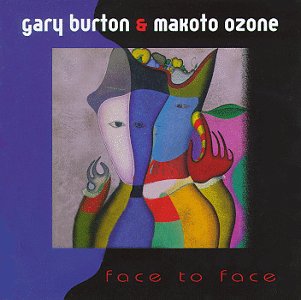 Another test in the tubed context was the intimate duet between Gary Burton and Mokoto Ozone, on their “Face To Face” [GRP 9805] encounter. Burton’s vibes are a great test for treble accuracy and the David cables did not disappoint in providing a fast and accurate portrayal, with no coarse treble texture. Ozone’s piano was also nicely colored, with no glossy glare. Some might prefer a little more resolution and quickness than was portrayed here in the tubed context, but the David’s finishing touches to this sweet, tubed system in a small listening space was very captivating, placing Burton and Ozone on an accurate and intimate stage.
Another test in the tubed context was the intimate duet between Gary Burton and Mokoto Ozone, on their “Face To Face” [GRP 9805] encounter. Burton’s vibes are a great test for treble accuracy and the David cables did not disappoint in providing a fast and accurate portrayal, with no coarse treble texture. Ozone’s piano was also nicely colored, with no glossy glare. Some might prefer a little more resolution and quickness than was portrayed here in the tubed context, but the David’s finishing touches to this sweet, tubed system in a small listening space was very captivating, placing Burton and Ozone on an accurate and intimate stage.
A Heroic David
Forgive me if I speak again of the namesake of these cables, but I thought it cool to realize that the critical sonic conclusions that I heard with the David Series cabling in my listening systems reminded me of my lasting impressions when I first laid eyes on Michelangelo’s magnificent sculpture of David housed in the Uffizi museum in Florence, Italy. The key thing I remember is how Michelangelo’s working of the marble in this sculpture was so lifelike that every aspect of David’s being came to life. I recall David’s musculature, his veins, even the small bones of his hands, visible within the carved stone. I also recall the large scale of the sculpture, thus perfectly capturing the essence of David’s heroic biblical role, as well as his youthful exuberance. This analogous image of capturing the robust quality of music, in all of its intention and exuberance, is what I found most captivating in my listening time with the David Series of cables in my particular listening systems. I would conclude that if you are happy with your present system, yet looking to put the icing on the cake to bring even more air and dynamics to the presentation, the David cables might be an excellent choice to audition. They do not possess the pinpoint resolution of my other references, the Nordost Valkyrja interconnects and speaker cables, nor do they possess the ease of maneuverability that the Nordost cables possess. What the David Series does bring is a heightened dynamic range to the music, a fullness without distortion, which makes the Valkyrja seem a little lean in comparison in my listening systems. By analogy, the Valkyrja gives you the microscopic detail of every vein and muscle hidden in Michelangelo’s David, while the Virtual Dynamics David offers a more dynamic presentation, a bit less resolving but more weighty in dynamics, air and soundstage. Thus, the David Series offers a wealth of riches at less shekels than the Nite or Master Series in the Virtual Dynamics lineup, and I highly recommend it as a true reference cable product.
A Note on Virtual Dynamics Armoured BX Cable and Receptacles-An Affordable Electrical Upgrade With Dynamic Results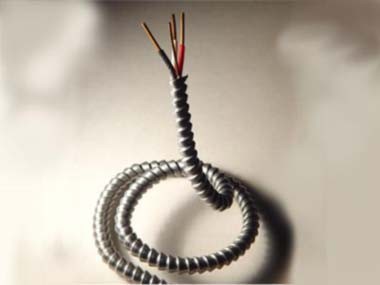 Before I inserted the David Series of cables into my listening systems, I took Rick Schultz’s advice and purchased Virtual Dynamics’ affordable solutions to upgrading the quality of electricity behind my walls that fed my reference audio listening area in my living room. I report to readers that this process was not only simple and affordable, but resulted in a new dimension of power and dynamics to my audio system, further enhancing the results of my prized Shunyata Hydra 8 power conditioning system. The process involved my electrician spending about one hour wiring a new dedicated 20 amp line from my circuit box to an installed new set of receptacles located near my audio rack. Virtual Dynamics’ specialty designed BX cable replaced my old house wiring in this dedicated new line, and they also provided new cryogenically treated receptacles. The BX cable is specially designed with a solid core cryogenically treated with a noise rejecting aluminum armor coating. The results of this upgrade in wiring can only be described as putting more octane in my musical delivery tank. Without any other changes in my audio system, I heard a clear improvement in dynamic delivery, with transients taking on more power, focus and nimbleness. For example, in the aforementioned Reference Recording of Copland’s Third Symphony, Copland’s stellar transient energy moving from forte in horns to pianissimo in woodwinds was delivered with greater impact and authority. I did not hear such dramatic expansion in soundstage and blackness of background as I had achieved with the introduction of the Hydra 8 power conditioning system, but did hear a welcomed increase in authority of delivery at all volume levels. In sum, in contrast to the compromised nature of the electricity feeding our audiophile systems behind our walls, I unconditionally recommend this simple and effective wiring upgrade utilizing BX cables and receptacles from Virtual Dynamics as an affordable improvement to removing yet another obstacle to our pursuit of capturing the divine in the music we cherish.
Before I inserted the David Series of cables into my listening systems, I took Rick Schultz’s advice and purchased Virtual Dynamics’ affordable solutions to upgrading the quality of electricity behind my walls that fed my reference audio listening area in my living room. I report to readers that this process was not only simple and affordable, but resulted in a new dimension of power and dynamics to my audio system, further enhancing the results of my prized Shunyata Hydra 8 power conditioning system. The process involved my electrician spending about one hour wiring a new dedicated 20 amp line from my circuit box to an installed new set of receptacles located near my audio rack. Virtual Dynamics’ specialty designed BX cable replaced my old house wiring in this dedicated new line, and they also provided new cryogenically treated receptacles. The BX cable is specially designed with a solid core cryogenically treated with a noise rejecting aluminum armor coating. The results of this upgrade in wiring can only be described as putting more octane in my musical delivery tank. Without any other changes in my audio system, I heard a clear improvement in dynamic delivery, with transients taking on more power, focus and nimbleness. For example, in the aforementioned Reference Recording of Copland’s Third Symphony, Copland’s stellar transient energy moving from forte in horns to pianissimo in woodwinds was delivered with greater impact and authority. I did not hear such dramatic expansion in soundstage and blackness of background as I had achieved with the introduction of the Hydra 8 power conditioning system, but did hear a welcomed increase in authority of delivery at all volume levels. In sum, in contrast to the compromised nature of the electricity feeding our audiophile systems behind our walls, I unconditionally recommend this simple and effective wiring upgrade utilizing BX cables and receptacles from Virtual Dynamics as an affordable improvement to removing yet another obstacle to our pursuit of capturing the divine in the music we cherish.
____________
Specifications:
All David Series Components Feature:
Electrolytic Tough Pitch Copper
UltraFine Dynamic Filtering
Speed of Light Technology
Seven dielectric layers with True Float Ground technology
Price: David Speaker Cable: $900.00 per 6 ft/pr
David Interconnect:$600.00 per meter
David Digital Interconnect: $300.00 per meter
David Power Cord: $550.00 per 5 ft/pr
Contact: Virtual Dynamics
Box 4494
5104-49A St.
Barrhead, AB
Canada T7N 1A4
Telephone: 1-877-347-4489 (toll free)
Fax: 1-780-674-5638 (fax)
Email: info@virtualdynamics.ca
Website: http://virtualdynamics.ca
![]()
Don’t forget to bookmark us! (CTRL-SHFT-D)
Stereo Times Masthead
Publisher/Founder
Clement Perry
Editor
Dave Thomas
Senior Editors
Frank Alles, Mike Girardi, Russell Lichter, Terry London, Moreno Mitchell, Paul Szabady, Bill Wells, Mike Wright, and Stephen Yan,
Current Contributors
David Abramson, Tim Barrall, Dave Allison, Ron Cook, Lewis Dardick, John Hoffman, Dan Secula, Don Shaulis, Greg Simmons, Eric Teh, Greg Voth, Richard Willie, Ed Van Winkle, Rob Dockery, Richard Doran, and Daveed Turek
Site Management Clement Perry
Ad Designer: Martin Perry





Be the first to comment on: Virtual Dynamics David Series Cables